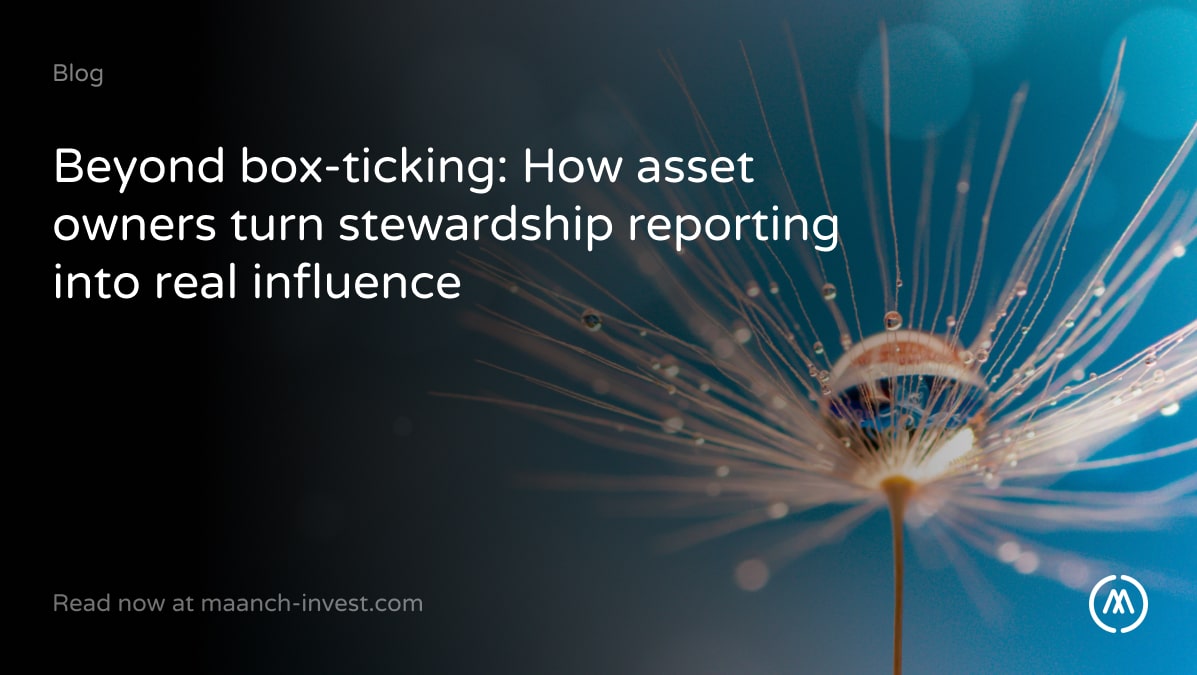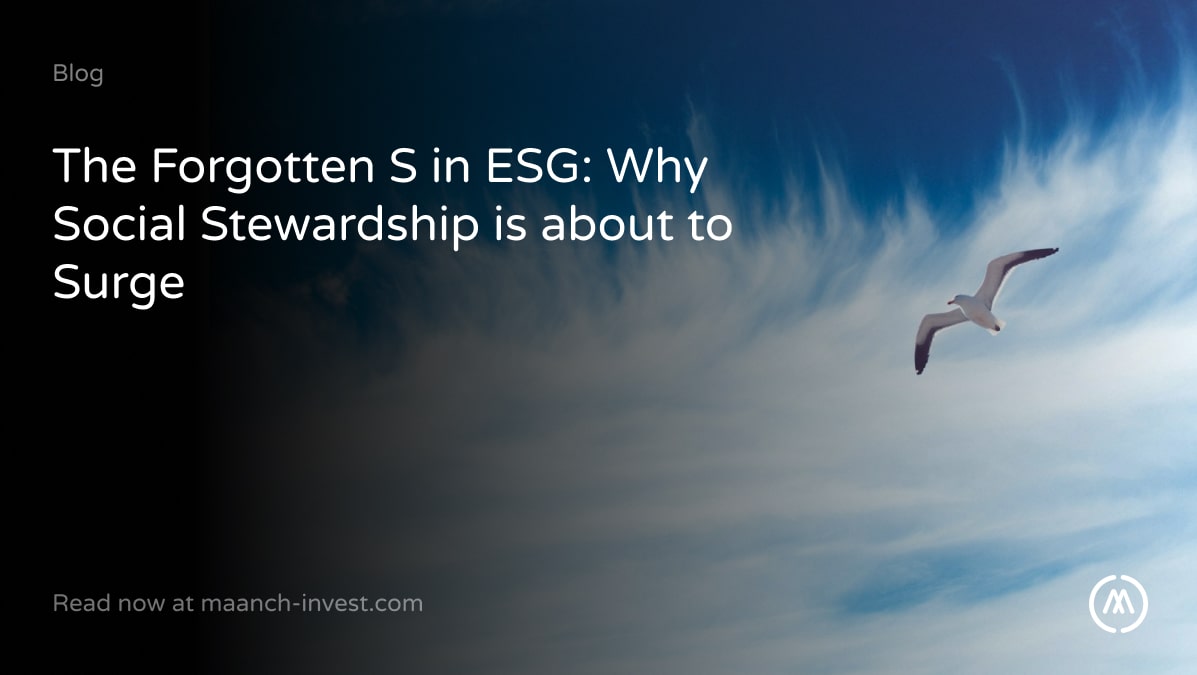Social impact investors, as well as charitable organisations and social enterprises, are increasingly faced with the challenge of needing to demonstrate the outcomes of their actions. There is growing interest in applying approaches to impact measurement as part of the trend towards SDG and ESG investing.
Invited as a panel member to a discussion hosted by Philanthropy Impact, David Stead of Maanch discusses the challenges and opportunities of impact measurement across the corporate world, investor ecosystem and non-profit sector.
Here is a transcript based on David’s comments during the discussion:
Are good intentions enough?
The intention to make a positive impact is important, especially if made as a public commitment. However, actions speak louder than words.
The CEO of a foundation, asset manager or company may speak out, but it’s the behaviours, decisions and results that matter. Are actions and dialogue aligned?
Words such as “impact” and “sustainability” are becoming overused. There is a lot of “noise”. This is getting in the way of the substance behind impact; and of a shared societal understanding of what “impact” really means.
Is there a need to measure outcomes? And what does impact really mean?
What impact really means is the change in outcome due to an investment, grant or business activity. This can be positive or negative. At Maanch, we are interested in the net impact (NSI – net societal impact) of all those outcome changes. We also want to see “additionality”. In other words, evidence that a positive change in an outcome wouldn’t have happened anyway. For example, did funding the charitable programme improve educational outcomes over time… or did other factors have a greater influence?
There is a definite need to measure outcomes. Without that data there won’t be evidence of success – or results to learn from. Tracking impact is also key, as these issues are often complex and change requires patient capital. Tracking enables an understanding of the trends over time. To give a few examples:
- The impact of an asset manager could be from the direct support of an impactful organisation in the private markets. Perhaps supporting an early-stage green energy company. Or in the case of public markets, this impact could lie in the influence it brings to bear on its portfolio companies through active engagement. For example, asking for greater boardroom diversity.
- The impact of a company lies in how its business activities create a positive or negative impact on society or the environment. But it is also important to consider how relevant the size of the problem and changed outcome is for that sector; its materiality. For example, a law firm cutting carbon emissions from a relatively low number is less impactful than a transport or industrial company doing so from a larger number.
- For a charity or social enterprise, the impact emphasis is likely to be on how its support creates improving outcomes for targeted beneficiaries aligned to its purpose.
What is driving this need to measure impact?
Stakeholders want to see more accountability from the recipients of funds or their business. This is true of all stakeholder groups, whether investors, customers, employees or philanthropists.
They also want greater transparency. This could be from charities using philanthropic capital or businesses receiving investment – it’s more similar than many people believe.
Philanthropists are often passionate about making a difference in an area they care about. They want to see the impact of their efforts, partly because there’s an opportunity cost – the funds could have supported a more impactful charity elsewhere. That said, not all philanthropists and foundations want to see a lot of impact data. Some prefer to see genuine human stories of impact showing video evidence of how the money has been used to improve people’s lives.
Is there a difference in measuring impact for the third sector and for ESG/ impact investing?
The key difference lies in expectation of financial return. Whilst investors are now looking at impact alongside risk and return, most still see ESG as a risk issue rather than as an opportunity to invest in the drivers of positive impact.
Interestingly, some causes start off in the third sector but become much more commercial. One example of this is climate action, which is now an area of global investment. There will be intense competition to invest in the most promising entities which deliver both financial returns and impact. Meanwhile, other “causal” areas still need grants and other means of charitable support. Take human rights or mental health for example; critical and complex areas for society but very hard to measure impact or expect commercial returns.
How do the Sustainable Development Goals fit in?
With extra layers of analysis the Sustainable Development Goals (SDGs) can provide great impact data. At Maanch, they are often our starting point to understand the impact of any organisation. The openly available data on its own is not enough. This needs to be broken down, analysed and manipulated towards useful topics and outcome measures, including understanding the links between the goals.
Using the SDGs as a lens in this way allows charities to match up with the funders who support those goals. Similarly, as SDG impact is taken up by more company CEOs, it helps companies to show investors and other stakeholders the impact they are making.
Do you think technology has a role to play in impact management?
Processes tend to be very inefficient. Especially ones in messy, emerging areas like impact and ESG. Technology can save a huge amount of time. For example, in matching the demand and supply of philanthropic capital around shared causes or SDGs.
Technology can help bring people together in a systematic way. This allows collaboration between investors, companies or foundations and scaling of impact. And it can help people to make better, evidence-based decisions.
One key challenge to be solved is effective stakeholder communication. Tech can automate reporting with real time data and bring it to life visually through digital dashboards. Please do get in touch to learn more about Maanch’s offerings concerning company, Foundation or asset manager dashboards, and investor-investee engagement.
What role should philanthropists and impact investors play in impact measurement?
They should be clear and realistic about what they want to measure and why. For example, small charities, social enterprises and SMEs don’t have the resources to spend lots of time collecting and reporting data. Is all the data really necessary and will it be used? Will decision-makers review it?
Impact measurement in charities has improved, but varies enormously. Some foundations and NGOs are extremely sophisticated, investing in deep evaluation and learning. They work closely with others on difficult and systemic issues which require multi-stakeholder action. For example, Impetus and Laudes Foundation do this well, working closely with beneficiaries and communities and using feedback loops to drive continuous improvement.
For others, impact measurement may not be a priority or they may not have the resources to do it. It also varies a lot by sector or causal area. Gaining meaningful and reliable data from sensitive or complex human situations is very challenging so we need to tread carefully there.
How can charities incorporate impact in screening and selection processes?
Key impact questions can be included in funding applications. And impact reports can be requested looking back at how the funds were used over a period of time, versus set KPIs.
One way for funders or charities to incorporate impact in their programme is through a well-tested approach based on asking the same few critical questions on a very regular basis. This means spending time upfront identifying the right 3-4 questions which tell you the most about how the target outcomes are being delivered. These questions could be asked monthly and the results tracked. This allows issues to be seen early on, allowing time for corrective action and learning. Most importantly, it’s not too arduous or time consuming for the recipient once the process is in place.
In conclusion, impact measurement is very important but we also need to be pragmatic and not be deterred from sustained action in the right direction to address the underlying issues.



